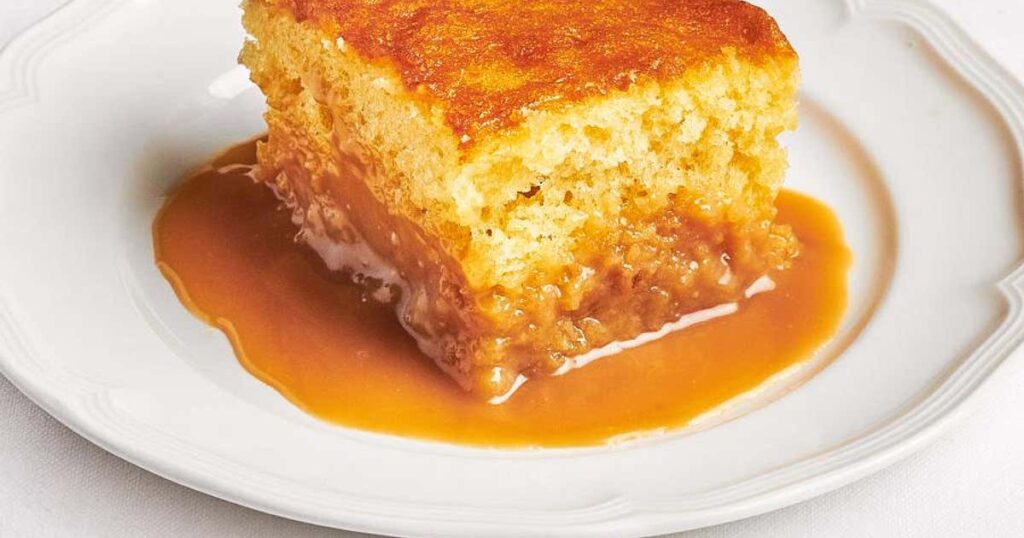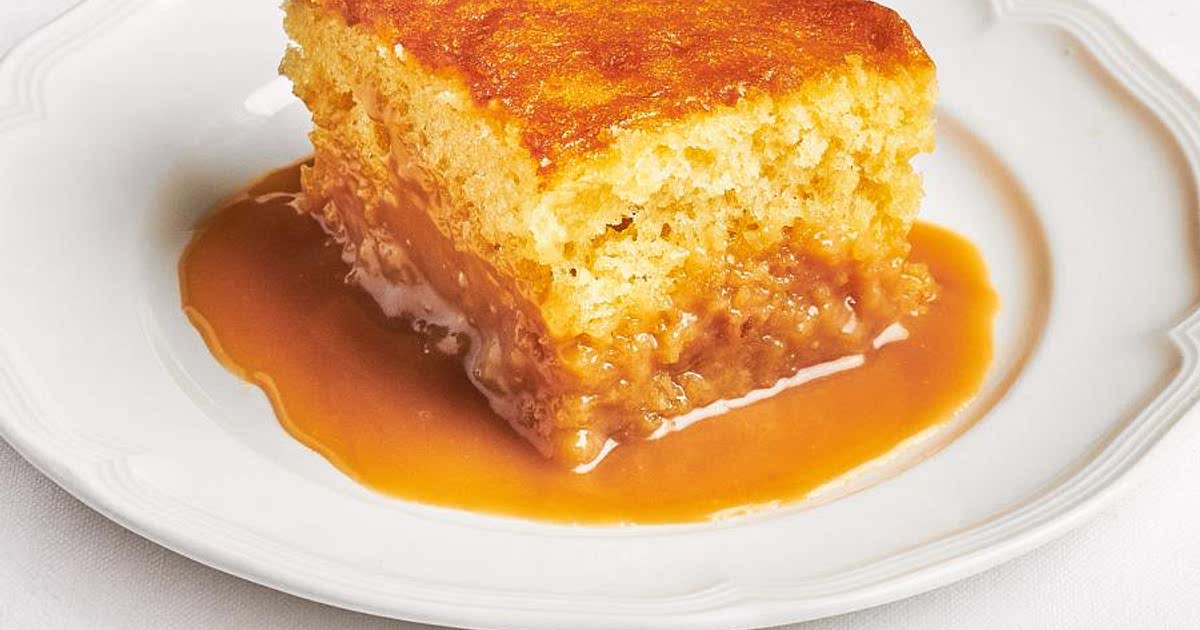
Pouding Chômeur à l’Érable: A Sweet Escape to Quebec’s Culinary Heritage
Pouding chômeur à l’érable, or unemployed man’s pudding with maple syrup, is a humble yet deeply satisfying dessert that speaks volumes about Quebec’s history and resourcefulness. Born out of the hardships of the Great Depression, this simple cake, bathed in a rich maple syrup sauce, has become a beloved symbol of Quebecois culinary identity. This article delves into the origins, evolution, and enduring appeal of pouding chômeur à l’érable, exploring its cultural significance and providing insights into how to recreate this iconic dessert at home.
The History of Pouding Chômeur
The story of pouding chômeur à l’érable begins in the 1930s, during the Great Depression. Times were tough in Quebec, as they were across the globe. Families struggled to make ends meet, and resourceful cooks had to find ways to create nourishing and comforting meals with limited ingredients. It was in this context that pouding chômeur was born. The name, literally translating to “unemployed man’s pudding,” reflects the economic hardship of the time. It was a dish created by working-class women, often factory workers, using inexpensive and readily available ingredients like flour, milk, butter (or lard), and, crucially, maple syrup.
Maple syrup was, and still is, a staple ingredient in Quebec. It was often more affordable than refined sugar, making it a natural choice for sweetening the pudding. The simplicity of the recipe, combined with the comforting sweetness of maple syrup, made pouding chômeur à l’érable a popular and accessible treat for families struggling through difficult times. The original recipes were likely passed down through generations, with each family adding their own unique touch.
The Evolution of a Classic
Over the years, pouding chômeur à l’érable has evolved from a humble survival food to a cherished culinary symbol of Quebec. While the basic recipe remains largely unchanged, variations have emerged, reflecting regional preferences and culinary innovations. Some recipes call for the addition of vanilla extract or other flavorings to the cake batter, while others experiment with different types of flour or fats. The sauce, too, can be adapted to suit individual tastes, with some cooks preferring a thicker, more intensely flavored maple syrup reduction.
Today, pouding chômeur à l’érable can be found in restaurants and bakeries throughout Quebec, often presented in a more refined and sophisticated manner than its humble origins might suggest. It is also a popular dessert to make at home, especially during the colder months, when the comforting warmth of the pudding is particularly appealing. The enduring popularity of pouding chômeur à l’érable is a testament to its deliciousness and its ability to evoke a sense of nostalgia and connection to Quebec’s culinary heritage. It is a reminder that even the simplest ingredients, when combined with creativity and resourcefulness, can create something truly special.
Key Ingredients and Flavor Profile
The beauty of pouding chômeur à l’érable lies in its simplicity. The key ingredients are readily available and relatively inexpensive. The cake batter typically consists of flour, baking powder, milk, butter (or vegetable shortening), sugar, and sometimes an egg. The sauce is made with maple syrup, butter, and sometimes cream or water. The combination of these simple ingredients creates a dessert that is both comforting and satisfying.
The flavor profile of pouding chômeur à l’érable is dominated by the rich, caramel-like sweetness of maple syrup. The cake itself is light and fluffy, providing a pleasant contrast to the dense, syrupy sauce. The butter adds richness and depth of flavor, while the baking powder ensures that the cake rises nicely. The overall effect is a dessert that is both comforting and indulgent, perfect for a cold winter’s night. The distinct flavor of pouding chômeur à l’érable is undeniably linked to the quality of the maple syrup used. Authentic Quebec maple syrup, with its characteristic amber color and complex flavor notes, is essential for creating a truly authentic version of this classic dessert.
How to Make Pouding Chômeur à l’Érable at Home
Making pouding chômeur à l’érable at home is surprisingly easy. Here is a basic recipe that you can adapt to your own tastes:
Ingredients:
- For the Cake:
- 1 cup all-purpose flour
- 1 ½ teaspoons baking powder
- ½ cup granulated sugar
- ½ cup milk
- ¼ cup melted butter (or vegetable shortening)
- 1 teaspoon vanilla extract (optional)
- For the Sauce:
- 1 cup maple syrup (preferably Quebec maple syrup)
- ½ cup heavy cream (or water for a lighter sauce)
- ¼ cup butter
Instructions:
- Preheat oven to 350°F (175°C).
- In a bowl, whisk together the flour and baking powder.
- In a separate bowl, combine the sugar, milk, melted butter, and vanilla extract (if using).
- Add the wet ingredients to the dry ingredients and mix until just combined. Do not overmix.
- Pour the batter into a greased 8×8 inch baking dish.
- In a saucepan, combine the maple syrup, cream (or water), and butter. Heat over medium heat, stirring until the butter is melted and the sauce is smooth.
- Pour the sauce evenly over the cake batter.
- Bake for 30-35 minutes, or until the cake is golden brown and the sauce is bubbling.
- Let the pudding cool slightly before serving. Serve warm, with a dollop of whipped cream or a scoop of vanilla ice cream, if desired.
This recipe provides a basic framework for creating pouding chômeur à l’érable. Feel free to experiment with different variations to find what you like best. You can add a pinch of salt to the cake batter to enhance the flavors, or you can use brown sugar instead of granulated sugar for a richer, more caramel-like flavor. You can also adjust the amount of maple syrup in the sauce to suit your preferred level of sweetness.
Variations and Serving Suggestions
While the classic pouding chômeur à l’érable is delicious on its own, there are many ways to enhance and personalize this beloved dessert. Here are a few ideas:
- Add fruit: Incorporate fresh or frozen berries, such as blueberries or raspberries, into the cake batter or serve them alongside the finished pudding.
- Spice it up: Add a pinch of cinnamon, nutmeg, or ginger to the cake batter for a warm and comforting flavor.
- Use different types of maple syrup: Experiment with different grades of maple syrup to discover your favorite flavor profile. Darker grades of maple syrup have a more intense flavor than lighter grades.
- Add nuts: Sprinkle chopped pecans or walnuts over the finished pudding for added texture and flavor.
- Serve with ice cream or whipped cream: A scoop of vanilla ice cream or a dollop of whipped cream is the perfect complement to the warm, syrupy pudding.
Pouding chômeur à l’érable is best served warm, either on its own or with a complementary topping. It is a perfect dessert for a cozy night in, a family gathering, or any occasion that calls for a comforting and delicious treat. The presentation of pouding chômeur à l’érable can range from rustic to refined, depending on the occasion. For a casual gathering, simply serve the pudding straight from the baking dish. For a more formal occasion, you can scoop the pudding into individual bowls and garnish with fresh berries or a sprig of mint. No matter how you choose to serve it, pouding chômeur à l’érable is sure to be a crowd-pleaser. [See also: Maple Syrup Production in Quebec]
The Cultural Significance of Pouding Chômeur
Beyond its delicious flavor and comforting texture, pouding chômeur à l’érable holds a special place in Quebec’s culinary heritage. It is a symbol of resilience, resourcefulness, and the ability to find joy even in the face of hardship. The story of pouding chômeur à l’érable is a reminder of the challenges faced by working-class families during the Great Depression, and it is a testament to their ingenuity and determination. The dish has become a part of the Quebecois identity, evoking a sense of nostalgia and connection to the past. It is a reminder of simpler times, when families gathered around the table to share a humble yet satisfying meal. The fact that pouding chômeur à l’érable continues to be enjoyed today is a testament to its enduring appeal and its cultural significance. It is a dish that embodies the spirit of Quebec, a spirit of warmth, generosity, and a deep appreciation for the simple pleasures of life.
Conclusion
Pouding chômeur à l’érable is more than just a dessert; it is a piece of Quebec’s history and culture. Its humble origins, simple ingredients, and comforting flavor have made it a beloved dish for generations. Whether you are a seasoned baker or a novice cook, making pouding chômeur à l’érable at home is a rewarding experience. It is a chance to connect with Quebec’s culinary heritage and to create a delicious and comforting treat that will be enjoyed by all. So, the next time you are looking for a dessert that is both delicious and meaningful, consider making pouding chômeur à l’érable. You won’t be disappointed. This classic Quebecois dessert, pouding chômeur à l’érable, offers a taste of history with every bite. Enjoy the simple pleasure of pouding chômeur à l’érable. Learning about pouding chômeur à l’érable is a journey through Quebec’s past. The authentic taste of pouding chômeur à l’érable is unforgettable. Make some pouding chômeur à l’érable today! There’s nothing quite like homemade pouding chômeur à l’érable.

